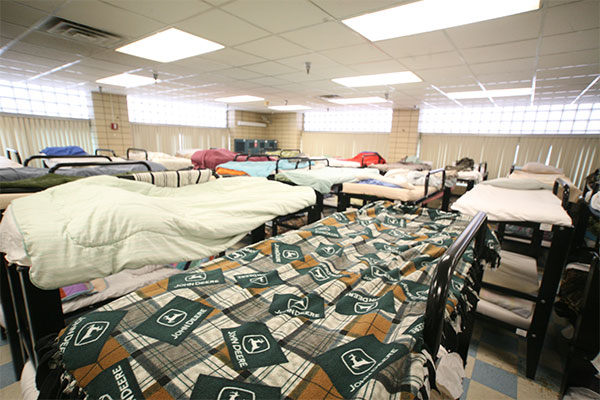Point in Time Count: A communitywide effort to track trends in homelessness

Volunteers lead this critical annual census
The Point in Time (PIT) Count is an annual census of people experiencing homelessness, which takes place at the beginning of each year. The count takes into consideration people who are staying in emergency shelter, transitional housing, and unsheltered locations. It is conducted by mandate of the U.S. Department of Housing and Urban Development (HUD) in communities across the country.
The goal of the count is to track long-term trends and evaluate changes over time. It has also proven to be an opportunity to bring the community together to connect with residents who are in need.
“It’s one night a year when there is a standardized, communitywide effort to cover the entire geographic area of Hennepin County,” said Erin Wixsten, a principal planning analyst in Housing Stability.
The PIT count provides an additional opportunity for Hennepin County teams and partners to provide support to community members. During the 2023 PIT count, Hennepin County’s Streets to Housing team met a man at a Maple Grove transit stop who was living out of his broken-down car. He was a senior, a veteran, and needed support to regain stability. Within half an hour of meeting this man, the Streets to Housing team connected him with the veteran-specific service provider, MAC-V, which was able to help him get into a hotel room, and a short time later, onto a path to housing stability. This would not have been possible without the collaboration of partnering agencies, social workers, and community volunteers stretching to every corner of the county.
Implementation and planning
Hennepin County implements the PIT Count locally, in partnership with community organizations and residents. We count residents who are staying in shelters and transitional living programs through the Homeless Management Information System database, while volunteers help us conduct surveys among households experiencing unsheltered homelessness.
“Our partnerships with local organizations are critical because they have the relationships with community members and can pivot their staff to conduct surveys,” Wixsten said.
This year there is a specific focus on finding volunteers who are representative of people experiencing homelessness. Leaning on this community insight and knowledge will be vital to obtaining an accurate count.

2023 saw an increase in families experiencing homelessness, but progress in other key areas
In 2023, the count found that 2,843 people were staying in shelters and transitional housing programs in Hennepin County, and 469 people were experiencing unsheltered homelessness.
These numbers are the highest since 2019, when staff and volunteers counted 2,797 people in shelters and 603 people in unsheltered settings.
The overall increase in people using shelter wa driven by a spike in families experiencing homelessness. That number was up by 79%, after a several-year downward trend. Several causes factored into that change, including the end of the eviction moratorium, record inflation affecting prices of food and fuel, and an influx of families arriving in the county without housing resources.
Yet, progress was shown in a few key areas. According to the 2023 count, homelessness in Hennepin County was down among several other populations since the previous year:
- Single adults: -7%
- People in unsheltered settings: -4%
- Veterans: -5%
This progress was made possible through year-round community efforts to move people from homelessness to housing. At a national level, homelessness increased across all these populations, so Hennepin County’s results stood out as particularly noteworthy.
2023 annual homelessness assessment report at a national level (PDF, 1MB).
The use of the Point in Time count
The Information gathered in the PIT is used in local, regional, and nation-wide planning.
The US Department of Housing and Urban Development (HUD) uses information from point-in-time counts in the congressionally mandated Annual Homeless Assessment Report to Congress (AHAR), which informs Congress about the number of people experiencing homelessness in the U.S. and the effectiveness of HUD’s programs and policies in decreasing those numbers.
Locally, the results are used in grant applications, evaluations of current programs, legislative proposals, and planning of future services.
How you can help
Learn about volunteering to help with the 2024 PIT Count.
Contact: endhomelessness@hennepin.us